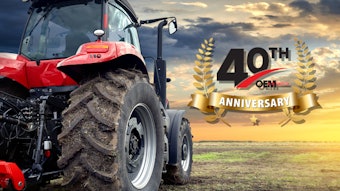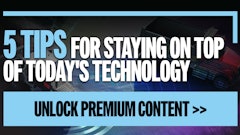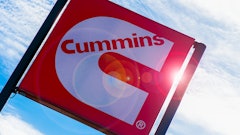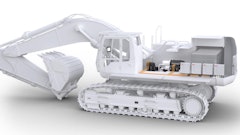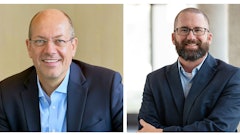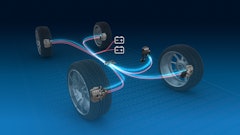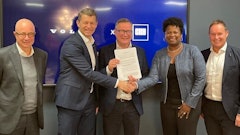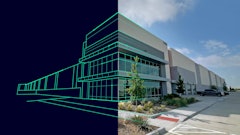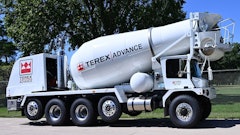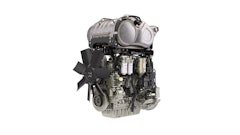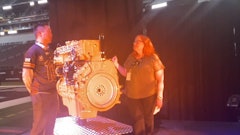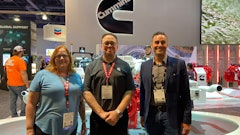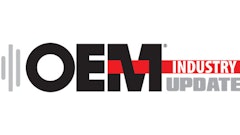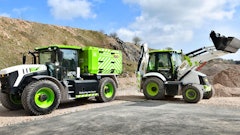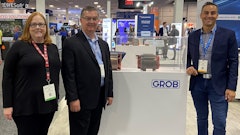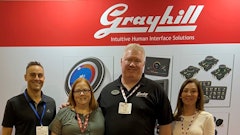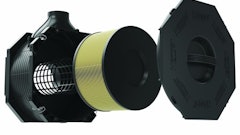Busworld Kortrijk 2011 had good participation with over 350 exhibitors (70 bus and coach builders) from 32 different countries. Many Original Equipment Manufacturers (OEMs) unveiled their new products, with particular focus on emissions reduction and hybrid technology. Fuel and alternative propulsion systems were prevalent with all manufacturers getting ready for Euro VI compliant products. The atmosphere remained subdued mainly due to market uncertainty and the impact of local governments’ spending.
The Belgian Bus and Coach manufacturer Van Hool had one of the largest stands. Other than launching the brand new TX Coach for the first time, they also showed the new ExquiCity concept. The principal characteristic of this Rapid Transit (BRT) bus is its multi propulsion platform. This vehicle can be fitted with a CNG drive, a Hybrid diesel electric system, a trolley, with fuel cells or batteries depending on customers’ needs. Thirty-nine ExquiCity buses were already ordered by a European public transportation company. Delivery will begin in mid-2012. Van Hool also claimed that there is a rising demand in fuel cell products. The Belgian manufacturer already has most of its urban buses available with a fuel cell propulsion system. Regarding the coaches, the TX series will be available with DAF Euro 5 engines from 265 kW up to 375 kW and MAN EEV (enhanced environmentally friendly vehicle) engines from 265 kW to 353 kW.
Volvo launched the new 7900 Hybrid city bus featuring a parallel hybrid with rear-mounted, 4-cylinder, 4.76 litre diesel D5F215 engine (161 kW/800 Nm) plus an electric motor (120 kW/800 Nm). This eBus has active temperature-controlled lithium-ion battery cells, with individual cell charge control. Compared to its predecessor the new 7900 is made of more light weight fibers. All these features allow the new 7900 Hybrid to save up to 37% in fuel consumption and CO2, while NoX reduction is even greater, with up to 50% lower emissions compared to a diesel Euro 5 bus. During the press conference, Volvo announced that Hamburger Hochbahn has already placed an order for 10 Volvo 7700 Hybrid buses. This order was received after a successful completion of field test with two hybrid buses at Süderelbe Bus during this year. Globally Volvo has already sold 250 hybrid buses.
Volvo also displayed a brand new 8900 Intercity Bus available with a Volvo D9B engine (380 hp, 1,700 Nm) or a Volvo D7E engine (290 hp, 1,200 Nm). These are available in an EEV version and with Diesel Particulate Filter (DPF). All engines meet Euro 5 standards using Selective Catalyst Reduction (SCR) technology.
MAN and Neoplan had several new models displayed at the show. MAN presented the new Euro 6 MAN Lion's City with a D2066 LUH engine delivering 235 kW (320 hp), with integrated exhaust-gas aftertreatment and an on-board diagnostic system complying with the statutory requirements for Euro 6. MAN also showed the D0836 LOH and D2676 LOH models with SCR technology which are both Euro 6 compliant.
The MAN Lion's City Hybrid is driven by two electric motors delivering 75 kW each, coupled by a summation gearbox. Together, the two motors produce a maximum torque of 3,000 Nm. When the bus decelerates, the electric motors function as generators, transforming the braking energy into electrical energy. This is stored in so-called traction energy storage; consisting of six ultracap modules mounted behind attractively formed and aerodynamically optimised panelling on the roof of the Lion's City Hybrid. Ultracaps, also known as high-power capacitors, have a number of advantages relative to the battery systems currently available: high power density, extremely fast power input, long cycle life, constant reliability and a high degree of efficiency. The Lion's City Hybrid uses a small-volume MAN six-cylinder diesel engine with a capacity of 6.9 litres and an output of 184 kW (250 hp) to produce electricity. This diesel engine with modern common-rail injection complies with the voluntary EEV emission standard and is equipped with a controlled CRTec particulate filter that cleans the exhaust gas of up to 99% soot. The diesel engine is operated mainly in its optimum speed range with reduced dynamic performance. As a result the low-floor bus saves up to 30% on diesel and CO2 with its serial hybrid drive.
The Neoplan’s Skyliner coach had its world premiere at the show. This coach is equipped with a MAN D26 common-rail engine, which delivers 371 kW (505 hp) and a maximum torque of 2,300 Nm at between 1,000 and 1,400 rpm. As a standard the power from the Skyliner's engine is transmitted to the rear axle via an automated 12-speed transmission called the MAN TipMatic. The Skyliner will be available exclusively in the EEV emission class.
MAN Truck & Bus AG sold over 5,400 buses and bus chassis under the MAN and NEOPLAN brands in 2010.
Scania presented their new solutions for the city and for long haul travel, making it clear that at the moment they are following a different road. The Swedish manufacturer was amongst the vital few (not many actually) without a hybrid vehicle at the show. Apparently, Scania thinks that the hybrid technology is not yet profitable. Furthermore the bus builder explained that alternative fuels are currently a better alternative to fossil fuel. Their brand new Citywide featured an aluminium body also giving it a light weight and resulting in lower fuel consumption. The new city bus is equipped with a 5-cylinder 9-litre EEV engine. This unit can run on diesel/biodiesel (230/280/320 hp), bioethanol (270 hp) or natural gas/biogas (270/305 hp).
Scania also showed two other coach models: the OmniExpress 3.20 and the long haul bus Touring HD. These Scania buses and coaches are powered by Scania 9 or 13-litre engines. The choice of power units includes options covering all renewable fuels that are commercially available today – biodiesel, bioethanol and biogas – which enables operators to minimize CO2 emissions here and now. Engines are available for EEV, Euro 5, Euro 4 and Euro 3 emission standards, depending on market needs. They are all based on a common platform, which facilitates servicing and parts supply. Both EGR and SCR technologies are used, depending on market conditions, fuel quality, etc. All engines deliver full torque from low revs (around 1,000 rpm). Transmission options include Scania's manual, electronic and automated gear changing (Scania Opticruise). In addition to coaches and intercity buses, Scania Opticruise is now also available for some suburban applications, as well as for all emission levels, giving an edge in efficiency, since power transmission is purely mechanical. Fully automatic transmissions from ZF are also available.
Scania underlined its leading position and commitment to the emerging markets and particularly in Brazil with these new products also capable of performing with all the new biofuels. 2010 represented a record year for Scania Truck and Buses with around 50,000 vehicles sold worldwide.
Iveco Irisbus, part of Fiat Industrial, displayed several models at their booth including the new Magely Pro and the Citelis Hybrid models. The Magely Pro is the latest model in the Magely Series. It has a Cursor 10 Euro 5 engine with power ranges from 280 kW to 330 kW (this last one can be equipped with a ZF AS Tronic automated gearbox). The Citelis Hybrid on display was fitted with a Cursor 6 EEV engine of 220 kW in addition to a 175 kW electrical engine. The hybrid kinematics makes it possible to leave out the gearbox. This bus was developed by Irisbus in partnership with BAE Systems, who provided the components for the electric traction chain.
Irisbus informed us that towards the end of 2010 they completed consumption tests under commercial conditions, i.e. parking at bus stops and door opening. These tests were conducted in Lyon, France. The bus was weighted to simulate the effect of 50 passengers on board. The 12 m hybrid Citelis was followed - for comparison’s sake - by a diesel Citelis. The improvements in terms of consumption were particularly significant, with the hybrid vehicle consuming 39% less on a flat urban service than its diesel equivalent at an average speed of 11.5 km/h. On a more hilly urban service, the improvement was 33% at an average 12.8 km/h. Consumption was 29% lower on a city-intercity service at an average of 24 km/h.
There was a lot of excitement at the Otokar stand. In fact the Turkish producer proudly displayed their entire range of buses, amongst which was the 12 m long, 290 HP, (24 seated plus 65 standing passenger capacity) KENT C. Citybus. This model is already present in the Western European market powered by a Deutz TCD 2013 L06 4V, EEV 6 cylinders, 7 litre engine. Otokar's Kent C bus was awarded the "Jury's Special Award" at Busworld 2011 Kortrijk.
The Polish family-owned company Solaris was also present. They premiered their new Urbino Electric bus. Based on the Alpino 8.9 LE this model has a range of 100 km before the battery needs recharging. The drivetrain of the Solaris Urbino electric is supplied by Solaris’s system partner Vossloh Kiepe. At the heart of the bus is a 120 kW, four-pole asynchronous electric motor, delivering up to 1,400 Nm torque.
Energy is stored in two 700 kg lithium-ion batteries with a combined capacity of 120.9 kWh at a nominal voltage of 600V. The batteries are supplied by Wamtechnik of Warsaw and are mounted at the rear of the bus on each side of the motor. During braking, energy is recuperated and stored in the batteries, which is also additionally charged from an external plug-in connection. At 3 x 400V, 63 A, it takes as little as four hours to completely refill fully exhausted batteries. Production will begin in 2013.
Busworld Kortrijk 2011 was also a very successful event for the Chinese bus manufacturer King Long. On top of launching two new busses the XMQ6120AGD, a low-floor city-bus and the XMQ6129Y, an HD (High Deck) luxury coach, King Long was awarded the 24th special medal by the founder of BUSWORLD Luc Glorieux. The medal is for enterprises which have made a great contribution to the technology, development and growth of the world bus industry. King Long exported 377 units to Europe in the first nine months of 2011 at a growth of 160% compared to 2010. The engine used in the city bus is a Euro 5 Cummins Engine ISL8.9E5280B, while in the XMQ6129Y was fitted a Euro 5 Cummins ISM11E5 engine.
The Tata Spanish Subsidiary, Tata Hisapno, also showed a limited range of their buses. They showed the Compressed Natural Gas (CNG) Hybrid low floor bus based on a Tata Motors chassis. The bus uses a Cummins ISBe 4.5 E5 engine capable of 136 kW, a Siemens induction electric motor with an output of 190 kW. On the storage side we find a twin lithium-ion battery with a capacity of 134 kW. This model was already in operation at the 2010 Commonwealth games held in Delhi and used for athlete transportation. Tata Hispano claims a reduction in fuel consumption and CO2 emissions of 30% when compared to a diesel bus. Furthermore this bus can run 5 km in pure electric mode, with zero emissions.
In summary most manufacturers presented their new models and alternative fuels technologies at the show. With the Euro 6 implementation target of 2014 drawing closer, all manufacturers are scheduling production of compliant products in their range. Hybrid products are still in their infancy with very few units sold in the last year. Overall all manufacturers have a hybrid product in their range particularly for urban applications. The major preoccupation voiced at the show was around the financial turmoil and its impact to this industry, leaving a big question mark on the outlook for the short term.


